Public, Private, or Charter: How to Choose Without Losing Your Mind
Artish GAL | The Thoughtful Nook
11/3/202513 min read
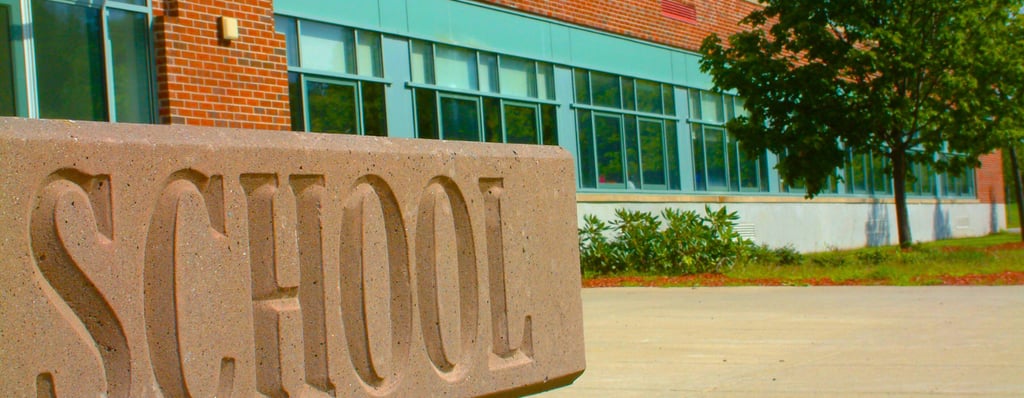

Let's Be Real
Your daughter came home with another perfect score.
All A's. Teacher's note says she's "exceeding expectations." The guidance counselor mentioned gifted testing.
You should feel proud.
Instead? You feel like you're drowning.
Because you see her. Really see her. Reading three grades ahead. Asking questions at midnight that make you pull up Google and pretend you knew the answer all along.
And now you're stuck wondering: Is this public school enough? Should you be stretching for private? What about that charter school Michelle won't shut up about at every soccer game?
Your neighbor just enrolled their kid in a charter school forty minutes away. Each way. Swears it's "life-changing."
Cool. Good for them.
Meanwhile, you're up at 2 a.m. doing math you hate.
The calculator laughs in your face. Your heart says she deserves the world.
This isn't just about choosing a school. It's about choosing between guilt, money, and hope.


The School Choice Maze That Came Out of Nowhere
1985? School was simple.
You walked to the building in your neighborhood. That was it. Done.
Nobody stressed. Nobody compared. Nobody laid awake Googling "best elementary schools near me" at 1 a.m.
Fast forward to now?
Public. Private. Charter. Magnet. Virtual. Micro-schools. Homeschool co-ops.
The options exploded.
Your anxiety did too.
And here's what nobody mentions while you're drowning in school district websites: more choices don't make you feel empowered.
They make you feel like every decision could be the one that ruins your kid's future.
Spoiler alert: It won't.
But let's talk about what you're actually choosing between. The big three most parents face. No fluff. Just what you need to know.


Public School: The Backbone Barely Holding On
Public schools educate 90 percent of American kids.
Free. Open to everyone. Required by law to take your child no matter what.
That's the promise.
Now let's talk about the reality.
The Money Problem Nobody Wants to Admit
Research consistently shows that funding disparities between wealthy and poor school districts remain significant.
According to a 2023 National Academies report, small school districts serving mainly white students receive $23 billion more than districts serving minority-majority districts. The Education Trust found that districts educating mainly white students receive $1,800 more per student per year compared with districts serving primarily students of color.
A 2023 FutureEd analysis found that in some states, it would cost three times more per pupil just to achieve average student performance in districts with higher poverty rates compared to more affluent districts.
So what does less funding look like in practice?
Thirty kids crammed in one classroom. Textbooks from 2012. No art teacher. No music program. One guidance counselor trying to manage 500 students who all need something different.
Your kid's brilliance doesn't change based on property taxes.
But the resources they get? Absolutely do.
And that's not fair. But it's real.

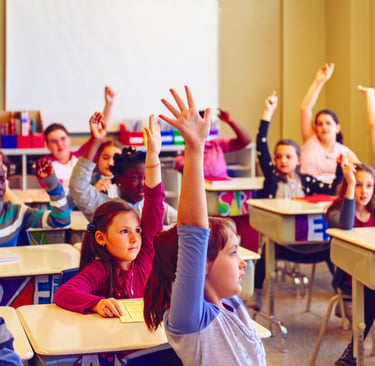
Class Sizes That Make You Wonder How Anyone Actually Learns Anything
According to data compiled from the National Center for Education Statistics, average class sizes in U.S. public schools typically range from 18 to 24 students, with 2022 data showing a national average of 24 students.
Sounds manageable, right?
Cool. Now go to an underfunded district. Watch that number hit 30. Sometimes 35.
A 2025 analysis found that average class sizes for grades 9-12 are now 27 students, with some high-growth states like Texas and Florida reporting averages above 30.
One teacher. Thirty-five kids with thirty-five different needs, learning styles, and home situations.
"Differentiated learning" becomes a joke, not a strategy.
Good teachers try. They really do. But math is math. Hours are hours. One person can't clone themselves.
But Public School Still Works for Millions of Kids
Let's be clear: public school isn't where dreams go to die.
Despite everything, public schools have produced doctors, engineers, artists, activists, and probably the person running the company you work for.
They offer something private schools can't buy: real diversity.
Different races. Different incomes. Different family structures. Different everything.
Your kid learns to navigate the actual world, not a bubble.
Plus, public schools are legally required to provide IEPs and 504 plans. Private schools? They can smile and suggest your child "might be happier elsewhere."
If your kid thrives in diverse environments and you've got a decent public school nearby? It might be exactly what they need.
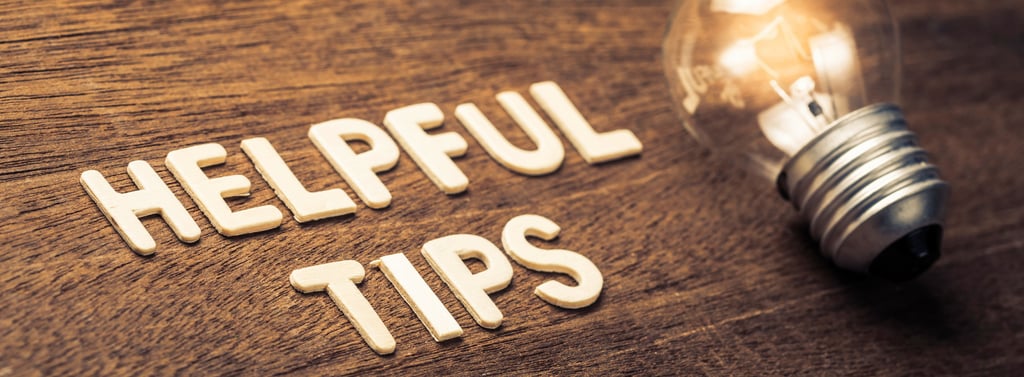

Visit schools during regular hours, not just during scheduled tours. Watch drop-off and pick-up. You'll see the real vibe, not the performance.


Private School
The Promise That'll Cost You Everything
Private school tuition varies widely, but according to industry data, families typically pay between $10,000 to $15,000 a year for elementary school and $15,000 to $25,000 for high school, depending on location and school type.
That's $800 to $2,000 a month. Every month. For years.
That's a mortgage payment in some cities. A car note. Rent.
Let that math sit in your chest for a second.
What You Actually Get (If You're Lucky)
Smaller classes. Like 12 to 15 kids per teacher.
More attention. Newer everything. College counseling starting in sixth grade. A network that opens doors you didn't even know existed.
Sounds dreamy.
But let's talk about what they don't put in the brochure.
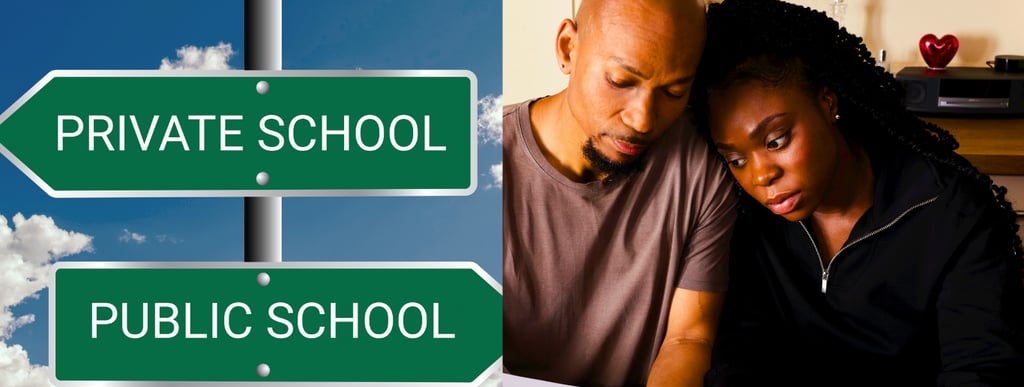

What You Don't Get
(The Quiet Part They Won't Say Out Loud)
Diversity.
Most private schools stay overwhelmingly white and upper-middle-class.
If your kid is one of three Black kids in the entire grade? They're not just students. They're representatives. Tokens. Walking education for white parents who want to feel progressive.
That weight? It's heavy.
Stories from families consistently show this pattern: children of color in predominantly white private schools often report feeling isolated, being asked to explain or represent their entire race, and experiencing microaggressions about their appearance, food, or culture.
Some families make it work. Others pull their kids out when the emotional toll outweighs the academic benefits.

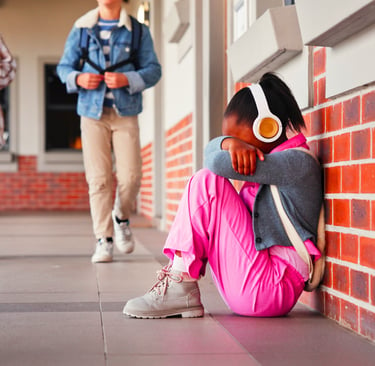
Accountability.
Private schools aren't bound by the same special education laws. If your kid struggles? If they need accommodations? Private schools can say "sorry, not a good fit" and show you the door.
They'll be polite about it. But you'll still be gone.
Real world readiness.
Some private school kids hit college and realize the world doesn't cater to them. They've never navigated crowded hallways, underfunded programs, or people who don't look like them.
Privilege is a bubble. And bubbles pop.
When the Cost Isn't Just Money
Families who stretch financially for private school tuition often face a hidden cost: stress.
Working multiple jobs. Skipping family vacations. Delaying retirement savings. Constant anxiety about whether you can make next semester's payment.
And sometimes kids feel that pressure too.
The daughter who stops reading for fun because everything becomes about performance. The son who has panic attacks before tests because he knows how much his parents sacrificed.
The question becomes: at what point does the pressure cost more than the perceived benefit?

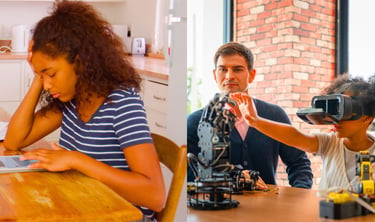
Charter Schools: The Wild Card You Can't Predict
Charter schools are publicly funded but run like private businesses.
They promise innovation. Flexibility. Results.
Some deliver.
Some are straight-up scams wrapped in good marketing.
When Charters Get It Right
Longer school days. Specialized focus like STEM or arts. Lottery admission so anyone can theoretically get in.
Some urban charters have genuinely changed lives for kids stuck in failing districts.
When they work? They work.
When They Absolutely Don't
The research on charter school performance is all over the place.
Studies consistently show massive variation some charters significantly outperform traditional public schools, while others perform worse than the underfunded public schools they claim to be saving kids from.
Here's what makes it messy:


Teacher turnover is brutal.
Charters hire young, idealistic teachers and burn them out in two years. Your kid's teacher this year? Gone next year. The replacement? Fresh out of college with zero experience.
Selective enrollment games. Research shows that some charters quietly push out kids with behavior issues or special needs to keep test scores pretty.
They won't say "we're kicking your kid out."
They'll say "have you considered that maybe this environment isn't the right fit?"
Translation: leave.
Investigative journalism has documented case after case of families pressured to withdraw kids who needed extra support.
One common pattern: parents get calls every week about their child's behavior. Eventually they realize the charter doesn't actually have robust special ed services.
They just wanted the kid gone so their numbers stayed high.
When families transfer to public schools with proper IEPs? Often the kids thrive.
The school wasn't the problem. The lack of real support was.


Ask charter schools directly: "What's your teacher retention rate?" and "How do you handle special education services?" If they dodge the answer, that's your answer.


Your School Evaluation Checklist: Questions to Ask Before You Decide
You've got the information. Now here's how to actually use it when you're visiting schools, talking to administrators, or trying to make a decision at 2 a.m.
Print this. Save it. Use it.
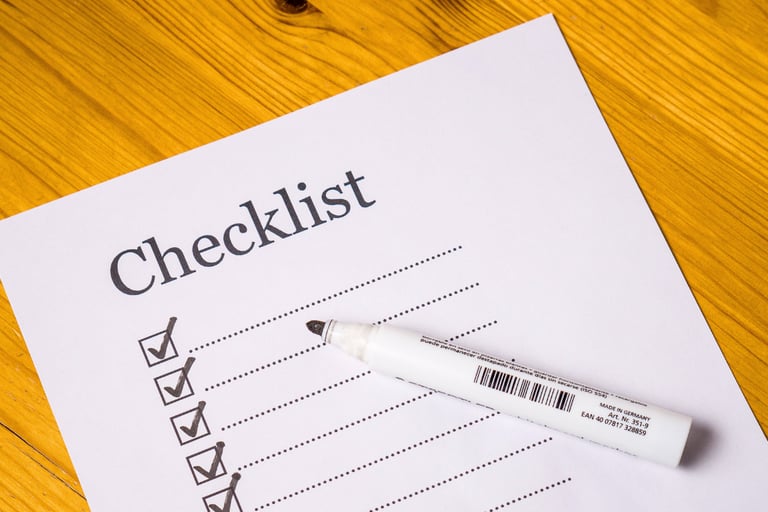

For ANY School Type
(Public, Private, or Charter)
Academic Support: ☐ What's the student-to-teacher ratio? (Get specific numbers, not vague "small class" promises) ☐ How do you handle students who are ahead or behind grade level? ☐ What support exists for students with learning differences? ☐ Can I see test scores and graduation rates?
Safety and Environment: ☐ What's the discipline policy? (Ask for the actual handbook, not just a summary) ☐ How do you handle bullying or conflicts between students? ☐ What does a typical school day look like? ☐ Can I tour during school hours and see classes in action?
Teacher Quality: ☐ What are teacher qualifications? (Certification requirements vary by school type) ☐ What's your teacher retention rate? (High turnover = red flag) ☐ How long has the current staff been here?
Parent Involvement: ☐ How do you communicate with parents? ☐ What does parent involvement look like here? ☐ How accessible are teachers and administrators?
Diversity and Inclusion: ☐ What does your student population look like demographically? ☐ How do you address issues of race, culture, and identity in the classroom? ☐ Do students who look like my child see themselves in the staff and curriculum?
Special Considerations: ☐ What special programs do you offer? (Gifted, special ed, ESL, etc.) ☐ What happens if my child needs additional support? ☐ What extracurriculars are available, and what do they cost?
Additional Questions for Private Schools:
☐ What is the TOTAL cost including fees, activities, uniforms, etc.? (Get the real number, not just base tuition) ☐ What financial aid is available, and how do I apply? ☐ What is your policy on students with IEPs or 504 plans? ☐ Can you connect me with current families I can talk to honestly?
Additional Questions for Charter Schools:
☐ What's your charter renewal status? (Charters can be closed for poor performance) ☐ How do you handle special education services specifically? ☐ What happens if my child struggles behaviorally or academically? ☐ What's your waitlist situation and enrollment process? ☐ Who manages this school? (Some are run by management companies - research them)
Trust Your Gut Questions:
After visiting, ask yourself: ☐ Did I feel welcomed, or did I feel like an inconvenience? ☐ Did the staff answer questions directly, or did they dodge? ☐ Did I see kids who looked engaged, or did they look stressed/bored? ☐ Could I see my child thriving here, or does something feel off?
Your instincts matter. If something feels wrong during a tour, pay attention to that.
Download: School Evaluation Checklist (PDF) — Keep it handy or share with friends.
Other Options
(In Case None of This Fits)
Not everyone fits the big three. Here are other paths:
Magnet Schools: Public schools with specialized programs. Free but competitive. Great if you get in. The catch? Lottery systems and long commutes.
Homeschool/Co-ops: Total flexibility but requires serious time and energy. Not for everyone. Some families do hybrid models.
We'll go deeper on alternative schooling later. Right now, let's focus on the choice most parents are actually losing sleep over.




Who Actually Wins? Let's Talk Real-World Results
Do Private School Kids Really End Up Better Off?
Short answer? Not really.
Research from the Brookings Institution found something interesting: when you look at kids from similar backgrounds with similar abilities, public and private school kids perform about the same.
Private school students often score higher on achievement tests, but researcher Richard Murnane found that's because they come from more advantaged homes and bring more skills to school with them not because of the school itself.
The advantage wasn't the school. It was the support system behind the kid.
Rich families offer tutors, test prep, college coaches, summer programs, internships through connections.
That's what drives success.
Not the name on the diploma.


What About Real-World Readiness?
Here's where public school might actually win.
Public school kids navigate chaos. Crowded hallways. Budget cuts. Teachers stretched thin. Classmates from every background imaginable.
They learn to adapt. To advocate. To survive systems that don't bend for them.
Private school kids sometimes hit college and realize the world doesn't care about their last name or their parents' donations.
Education researchers consistently note that privilege can insulate kids from developing resilience and problem-solving skills that come from navigating challenge.
Struggle teaches what comfort can't.
Let that one sit.


Visit colleges and ask admissions counselors: "Do you see differences in preparedness between public and private school students?" Their answers might surprise you.


The Parent Guilt That Keeps You Up at Night
Let's talk about the thing you don't say out loud.
You see your child's potential.
You know what they could do with more resources, better teachers, smaller classes.
But the money isn't there.
Private school costs three months of your salary. Tutoring is $60 an hour. Enrichment camps, SAT prep, college counselors.
It all adds up to a number that makes you want to cry.
And you feel like you're failing them.
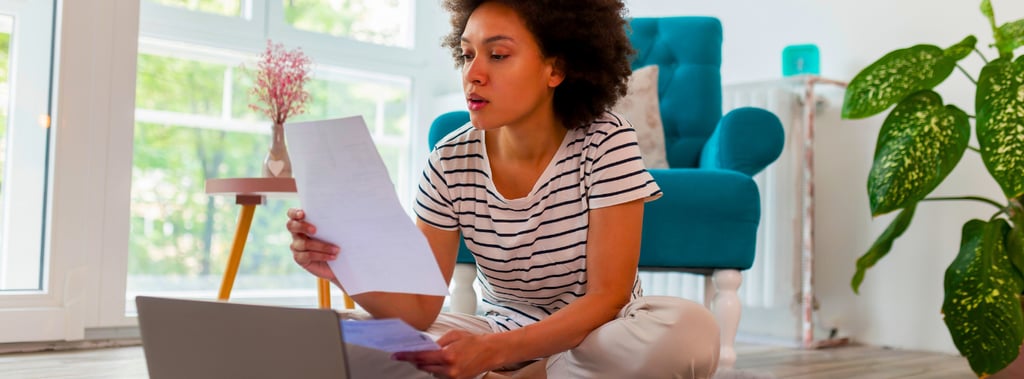

Stop. Listen to Me.
You are not failing.
Your child's future isn't bought. It's built.
Research consistently shows: parental involvement, emotional support, and consistent encouragement predict success more than school type, tuition cost, or zip code.
Read to them. Ask about their day. Show up to the school events. Advocate when something's wrong. Teach them that effort beats perfection.
That's what actually changes lives. Not the price tag on tuition.
What the Research Actually Says
Multiple studies confirm:
Students with strong family support show significantly higher academic achievement and graduation rates regardless of school choice
Parental engagement, not school type, is one of the strongest predictors of student success
Emotional support and a stable home environment matter more than resources for long-term wellbeing and resilience
Your presence is the advantage no tuition can buy.
![Parent involvement matters more than school type."]](https://assets.zyrosite.com/cdn-cgi/image/format=auto,w=1024,h=363,fit=crop/Y4LDqQzQwGHMo5Ge/21-GaOgLg3Jjc3Zbpll.png)
![Parent involvement matters more than school type."]](https://assets.zyrosite.com/cdn-cgi/image/format=auto,w=375,h=366,fit=crop/Y4LDqQzQwGHMo5Ge/21-GaOgLg3Jjc3Zbpll.png)
The Truth We All Need to Hear
There is no perfect school.
Public schools are underfunded and overcrowded.
Private schools are expensive and sometimes isolating.
Charters are unpredictable and inconsistent.
Every choice comes with a price.
But here's what actually matters:
Does your child feel seen?
Do they feel safe?
Do they have at least one adult who believes in them?
Are you showing up, even when you're exhausted and broke and overwhelmed?
That's what research shows predicts success. Connection. Support. Presence.
Not the school name. Not the test scores. Not the tuition bill.


The 2 a.m. Question
Am I doing enough?
Yes.
If you're here, reading this, researching, losing sleep, showing up even when you're tired?
You're doing enough.
Your kid doesn't need perfect.
They need you. Present. Fighting for them. Showing them their worth isn't tied to a building or a brand.
Make the best choice you can with what you have.
Then forgive yourself when it's messy.
Because it will be messy. And that's okay.


What Happens Next
You've got the info. You know the options. You see the trade-offs.
Now comes the harder part: making sure your kid actually thrives once they're in the system.
How do you fight when something's wrong? Spot red flags before they explode? Handle gifted program burnout? Deal with discipline disparities? Get teachers to actually call you back?
That's Part 2: School Advocacy 101.
Choosing the school is half the battle.
The other half? Making sure your child is seen, heard, and supported once they're there.

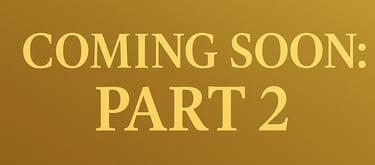
Further Reading
U.S. Department of Education: School Choice and Funding
Brookings Institution: Public vs Private School Research
National Center for Education Statistics: School Comparison Data
GreatSchools.org: School Ratings and Reviews
Niche.com: Parent Reviews and Rankings


Resources Worth Saving
School Comparison:
GreatSchools.org - Compare schools in your area
Niche.com - Rankings and parent reviews
Private School Financial Aid:
National Association of Independent Schools (NAIS)
Charter School Research:
National Alliance for Public Charter Schools
Parent Support:
National PTA - Advocacy tools and resources
Whatever you choose, stay involved. Show up. Your presence is the advantage no tuition can buy.
Now breathe. You've got this. And your kid's going to be fine. Better than fine. Because they've got you.


Written with honesty and care from The Thoughtful Nook where we make space for the conversations that matter.
About The Thoughtful Nook
The Thoughtful Nook provides educational content on parenting, relationships, wellness, and navigating life's challenges. All content on this site is for informational purposes only and does not constitute legal, medical, financial, or professional advice.
We share research, personal perspectives, and community experiences to spark conversation and provide support. However, every individual and family situation is unique. Laws, regulations, and best practices vary by location and circumstance.
Always consult with qualified professionals—including attorneys, healthcare providers, therapists, financial advisors, or education specialists—before making important decisions affecting you or your family.
The Thoughtful Nook and its contributors are not liable for any actions taken based on information provided on this site. By using this site, you acknowledge that you are responsible for your own decisions and their outcomes.
